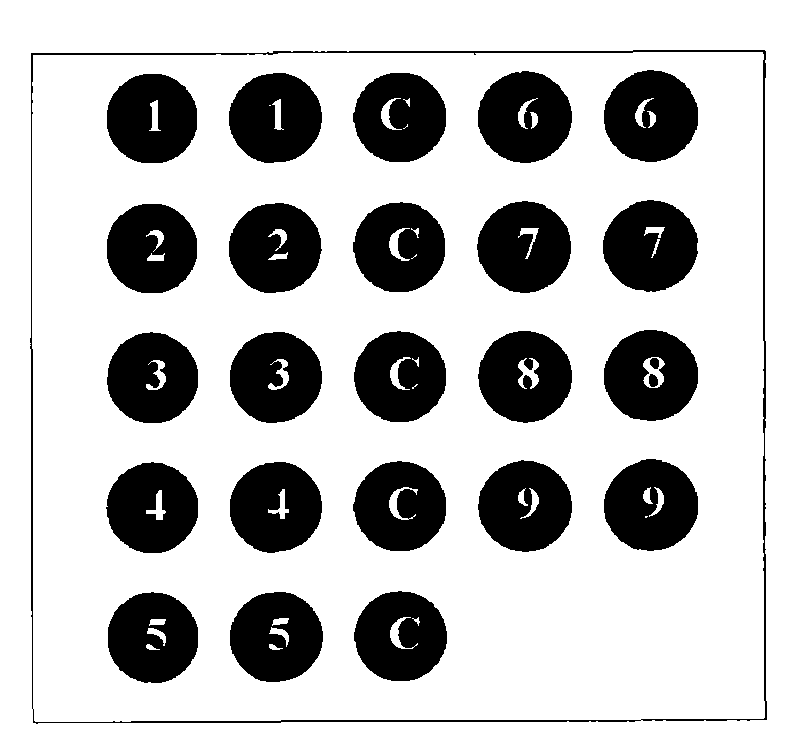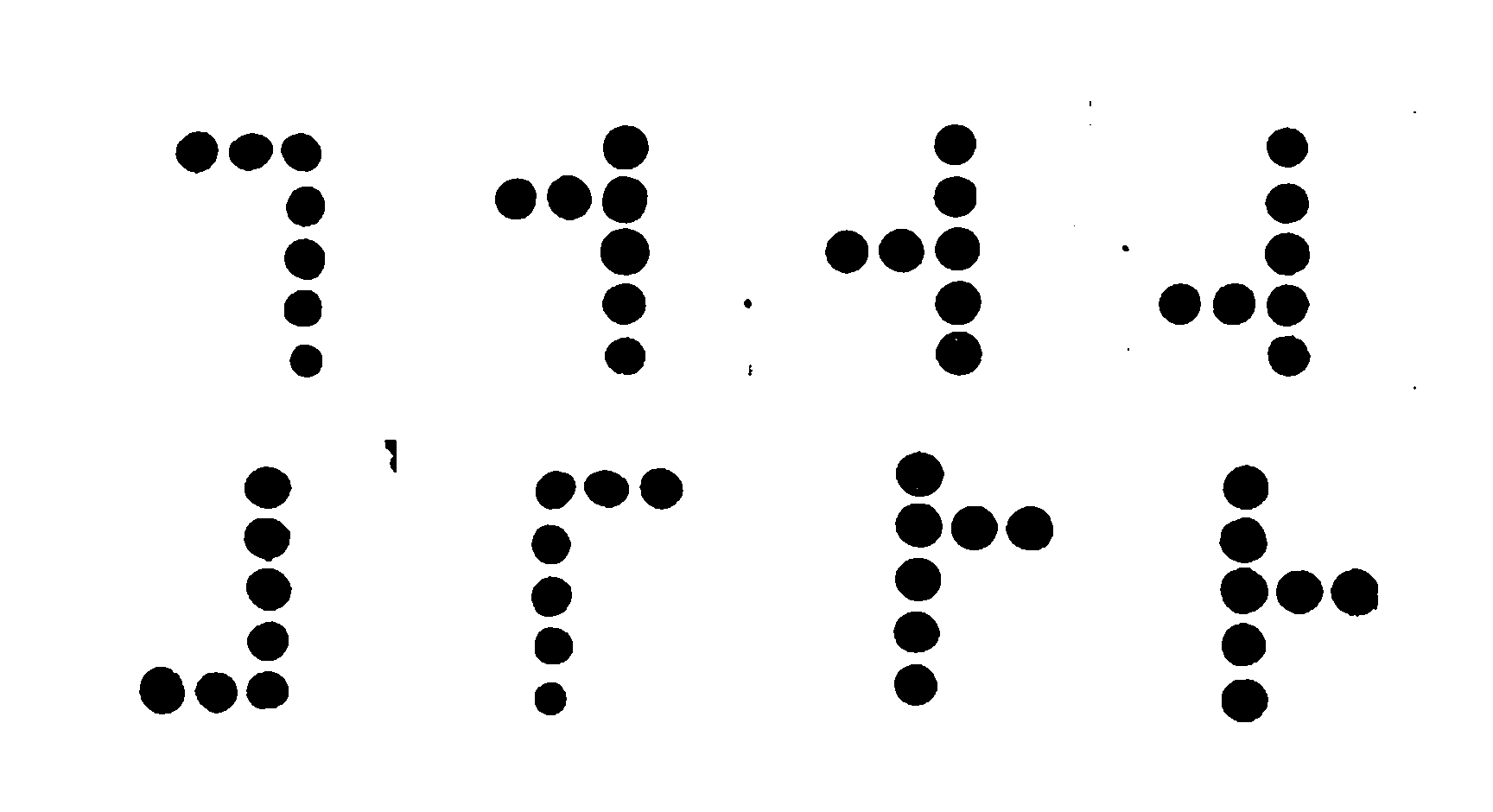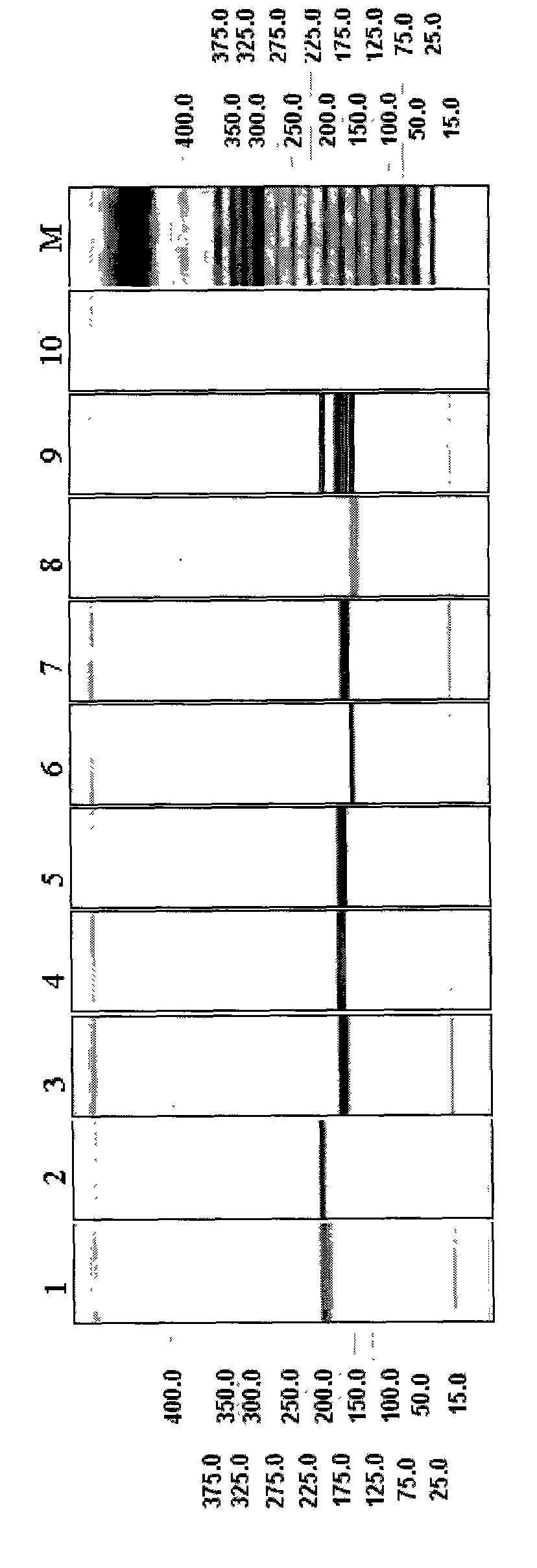Transgenic cotton detection chip, kit and use
A detection kit and detection chip technology, applied in the biological field, to achieve the effect of sensitive detection results and low homology
- Summary
- Abstract
- Description
- Claims
- Application Information
AI Technical Summary
Problems solved by technology
Method used
Image
Examples
Embodiment 1
[0049] The inventors of the present invention realized the simultaneous and rapid detection of 8 kinds of transgenic cottons through the visual chip technology for the first time.
[0050] The main detection instruments used:
[0051] Micropipettes (10 μL, 100 μL, 1000 μL Eppendorf), fluorescent quantitative PCR instrument (ABI 7700 Applied Biosystems, USA)), high-speed desktop centrifuge (Pico17Thermo), high-speed pulverizer (IKA-WEARKE GERMANY), nucleic acid and protein analyzer (DYY -6C Beijing Liuyi Instrument Factory), the ultraviolet gel imager is the Gene Genius system produced by Syngene; the AD3200 chip spotting instrument is produced by BioDot.
[0052] Detection of the main reagents:
[0053] The sequences of primers and probes were designed by our laboratory and synthesized by Beijing Aoke Biotechnology Co., Ltd. (see Table 1 for the specific sequences). Taq enzyme, dNTPs, 10×PCR Buffer, ethidium bromide, DNA Ladder Marker (Takara); TaqMan Universal PCR Master Mi...
Embodiment 2
[0080] Simultaneous Detection of Eight Kinds of Transgenic Cotton Using Multiplex PCR
[0081] In this experiment, by adjusting the sequence length and TM value, the annealing temperature of the eight sets of primer sequences was kept at about 60°C, and the hybridization temperature of the eight probes was kept at about 50°C, so as to ensure the simultaneous amplification of the multiplex of the eight transgenic cotton samples. The conditions for PCR and hybridization were the same.
[0082] Firstly, the 8 kinds of samples were detected respectively by conventional PCR method to determine the specificity of each primer sequence (results see image 3 ). The eight sets of primers were set at 5 concentration gradients (0.1 μmol / L, 0.2 μmol / L, 0.4 μmol / L, 0.8 μmol / L, 1.0 μmol / L), and cross-mixed sequentially for multiplex PCR amplification to determine the concentration of multiplex PCR. The optimal concentration of each set of primers in the reaction system.
[0083] The resul...
Embodiment 3
[0085] Taking sample Mon 1445 as an example, determine the spotting concentration of the hybridization probe. Spot the Probe-Mon 1445 (SEQ ID NO.17) probe solution with a concentration of 1 μmol / L, 5 μmol / L, and 10 μmol / L sequentially on the chip, and perform a hybridization test according to the conditions described in Example 1. The result is as Figure 4 As shown, the hybridization signal intensity of the three probes is basically the same, that is, when the probe concentration is 1 μmol / L, it has reached saturation, and on this basis, increasing the probe concentration has little effect on the hybridization signal strength.
PUM
 Login to View More
Login to View More Abstract
Description
Claims
Application Information
 Login to View More
Login to View More - R&D
- Intellectual Property
- Life Sciences
- Materials
- Tech Scout
- Unparalleled Data Quality
- Higher Quality Content
- 60% Fewer Hallucinations
Browse by: Latest US Patents, China's latest patents, Technical Efficacy Thesaurus, Application Domain, Technology Topic, Popular Technical Reports.
© 2025 PatSnap. All rights reserved.Legal|Privacy policy|Modern Slavery Act Transparency Statement|Sitemap|About US| Contact US: help@patsnap.com



